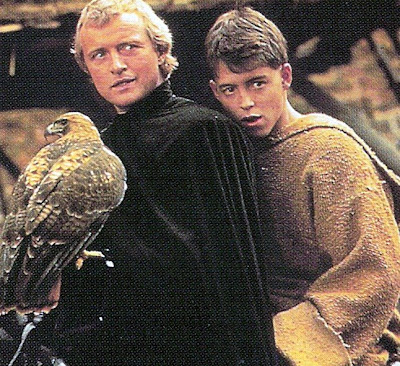"Ferris Bueller's Day Off" features a pretty interesting narrative structure, since the character, Matthew Broderick, is given some interesting monologues that function as a sort of dialogue with the audience. The audience may never speak to Ferris, and so when he speaks, his internal feelings at best are a sort of as rumination for himself.
However, there is another movie where Matthew Broderick does a similar narration, where he speaks out his internal thoughts; but in the movie "Ladyhawke", he is not addressing the audience, per se, but rather God. Broderick plays Philipe 'The Mouse' Gaston, a thief who must help a cursed knight and his lady-love break the awful spell placed upon them by a jealous bishop during the Middle Ages.

Like in 'Ferris Bueller', Broderick's character speaks to the camera, but instead of directing his personal comments to whoever might be listening, instead he does it for God. In looking towards himself, Philipe finds God, and then the film portrays this monologic prayer as a dialogue, demonstrating not only how prayer can transform what may seem as a monologue into a dialogue, but how art can speak out to us, and us through it then.

No comments:
Post a Comment